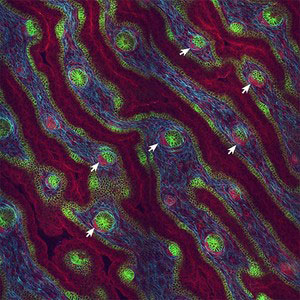For decades, scientists have been trying to discover- How hair follicles grow from a sea of seemingly uniform skin cells during embryonic development.
Now, Yale scientists have finally found the answer.
They examined the molecular and cellular events that occur prior to visible evidence of hair follicle formation. For this, they combined the study of genetically engineered mouse models with single-cell RNA methods.
This combined approach helps them determine key molecular changes that occur within a subpopulation of dermal progenitor cells as they differentiate and mature into cells uniquely capable of inducing hair follicles. Scientists found that these dermal progenitor cells can be found spatially within a specific reservoir just peripheral to the forming hair follicle.

During the study, scientists identified a cell signaling pathway that controls this separation procedure and the enlistment of hair follicles. By adjusting this signal in mice, they had the capacity to direct hair follicle size amid early skin development.
Senior author Peggy Myung, assistant professor of dermatology, said, “The study gives us clues that can be utilized to potentially stimulate the skin to regenerate hair follicles that have been lost.”
“The hair follicles you have as an adult are the ones you were born with, and hair follicles that are lost by injury or inflammation generally cannot be recovered.”
“But with this study, we now have a molecular handle to begin to determine the signals that can instruct adult skin cells to regenerate what was lost. It also provides a paradigm to elucidate how other appendages that follow similar mechanisms of development, such as teeth, first emerge and grow.”
The study is published in the journal Developmental Cell.
